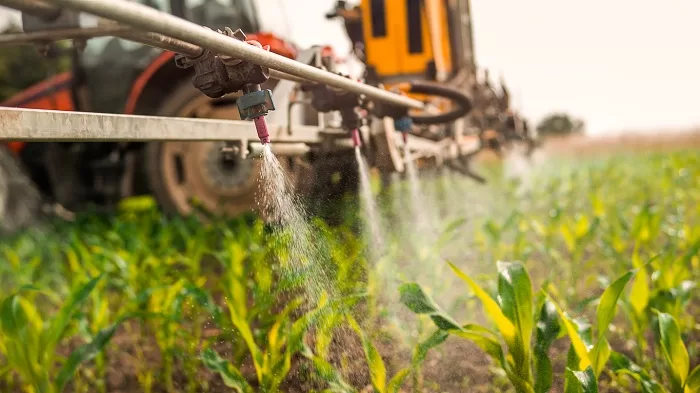Education
The Risks of Pesticides Need Assessing in The Same Way as Human Medications Are, Say Experts

Low-levels of pesticide may still be a threat to a natural ecosystem according to experts, and a more thorough risk assessment is needed before they are used in the environment to avoid potentially killing ‘good’ insects, plants or fungi that we depend on.
In an article published in the British Journal of Pharmacology, experts from the University of Nottingham and University of Edinburgh, as well as independent experts in France and Scotland, discuss the lack of understanding of the sub-lethal effects of pesticides.
They propose that the profile of pesticide bioactivity is monitored in a manner similar to the way in which information about medicines for humans is available, in order that an informed risk assessment can be conducted.
The medicines used to treat people and animals are mostly chemicals that can have damaging effects if taken in excess, so people are generally familiar with the distinction of ‘dose’ and ‘overdose’.
Modern medicines are extensively tested by pharmacologists and other scientists, so we know the levels they get to in the body and which organs they reach. We know how the body can change these medicines chemically and whether these chemical products have different functions.
For each medicine, experts have information about the levels in the blood that are needed to produce a desired effect. They also know the higher levels which can produce damage and death. The gap between these levels is described as the medicine’s therapeutic window. One of the aims of medicine discovery and development is to make that window as large as possible, to reduce the risk of unintentional damage.
Now, a group of scientists says that the same approach should be taken for the development of pesticides.
Pesticides are chemicals, used to treat crop problems (pests, competing weeds and fungal attack). Experts can draw parallels with antibacterial drugs, commonly known as antibiotics, in that they are both intended to kill or deter pests. In both cases, these chemicals are designed principally to be safe for humans and most animals.
However, there may still be unwanted effects, and collateral damage to other beneficial species more similar to the pest being targeted. The use of antibiotics in humans can lead to an inhibition of the ‘good’ bacteria in our gut, which people often notice as a temporary stomach upset or diarrhoea.
Just as we know that the long-term use of some medicines can cause undesirable changes in humans, an understanding of the long-term consequences of persistent pesticide exposure, particularly when multiple pesticides are present, is needed. Importantly, chronic adaptations may lead to altered responses over time, which may result in increased vulnerability in beneficial species and drive resistance mechanisms in pests. Even lower doses of these pesticides can still be bioactive (a pharmacological effect) even though those doses are not toxic (a toxicological effect), not only for the target pest species, but also for beneficial bystander species.”
Dr Steve Alexander, an Associate Professor of Molecular Pharmacology in the School of Life Sciences at the University of Nottingham
Currently, the reporting of pesticide use focuses on the weight of the agent used. This value bears no relationship to its level of toxicity (the level that damages or is lethal) or bioactivity (the sub-lethal level that alters function and behaviour).
In terms of insecticides (pesticides designed to target insect pests), one would want to compare dose effects (both lethal and sub-lethal) in target species (aphids, for example) compared to bystander species (bumblebees, for example). Given the dramatic body changes insects go through in their life cycle, it is important to identify if different life stages (larvae or adult) are more vulnerable to a pesticide.
Dr Alexander adds: “Finally, just as in the training of doctors, when they are prompted to consider the patient as a whole rather than focus solely on the disease, we should recognise there may simultaneously be other threats (co-morbidities). Environmental conditions (drought, floods, diseases, other pesticides, for example) could change the levels of pesticide or the susceptibility of different species to the pesticide.
“Some of these data are available, although not from a single source. We would wish to see a centralised, independent and freely accessible online database, which presents these data, as much as to inform about the evidence as to identify where evidence is lacking.”
Source: The University of Nottingham





















































